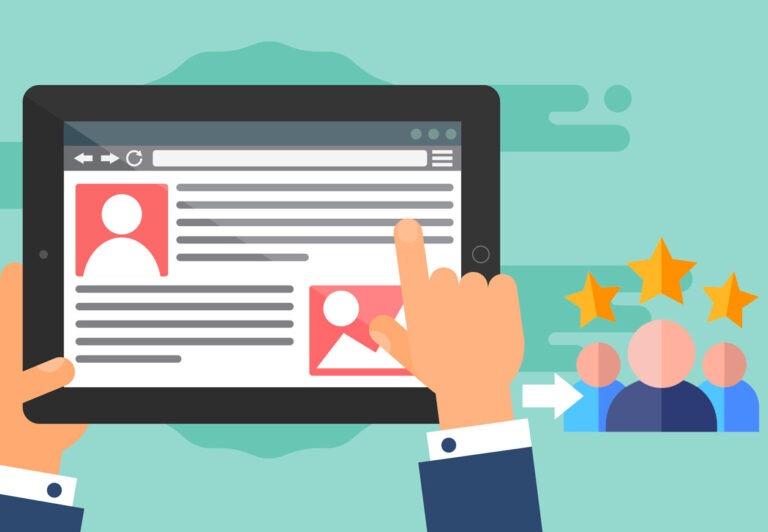What is B2B Lead Generation? Strategies & Tools for 2025

I hope you enjoy this blog post. If you want Hello Bar to grow your leads, click here.
Author:
Ryan Bettencourt
Published
June 6, 2024
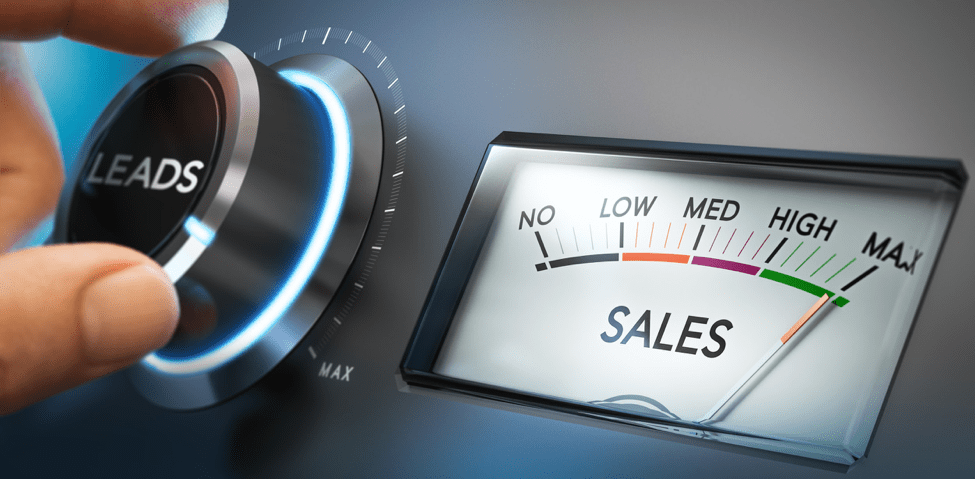
B2B lead generation is not easy for sales and marketing teams. It’s not as simple as B2C marketing where people click on an Instagram ad and buy something within minutes. The B2B customer journeys and sales processes are long and tedious.
That’s probably why lead generation is a top priority for 65% of B2B marketers and sales and marketing teams, according to a ViB report.
B2B customers take their time considering various options and research to make decisions. Making a B2B buyer aware of and interested in your product is not an easy task, but with the right B2B lead-generation strategies, it becomes easier.
In this guide, we’ll provide you with a handpicked list of the best B2B lead-generation strategies that actually work for sales teams in 2025.
What Does B2B Lead Generation Mean?

B2B lead generation involves attracting prospective customers to your business and collecting their contact details. Sales teams can solicit and generate sales leads in numerous ways, from cold calling to social media, which are often empowered by tools like telemarketing and cold calling software.
Who you consider B2B leads can change depending on your specific goals. For instance, do you want more people to sign up for your email list? Are you interested in attracting more social media followers?
A lead could be a person who signed up for your newsletter, a new social media follower, or a prospective buyer who gave you their business card.
Once you capture a lead, i.e. get their contact information, you can engage with them to turn them into buyers. That’s the power of lead generation—it brings new prospective buyers into your sales funnel. Without it, you won’t be able to win new customers.
How is B2B Lead Generation Different From B2C?
B2C and B2B marketing share lots of the same fundamental goals and strategies. However, a major ingredient in the equation — the target audience — vastly differs between the two.
For instance, when you’re creating buyer personas for your B2B content marketing strategy, you likely focus more on your target audience’s professional needs and goals. A B2C marketer focuses more on personal traits.
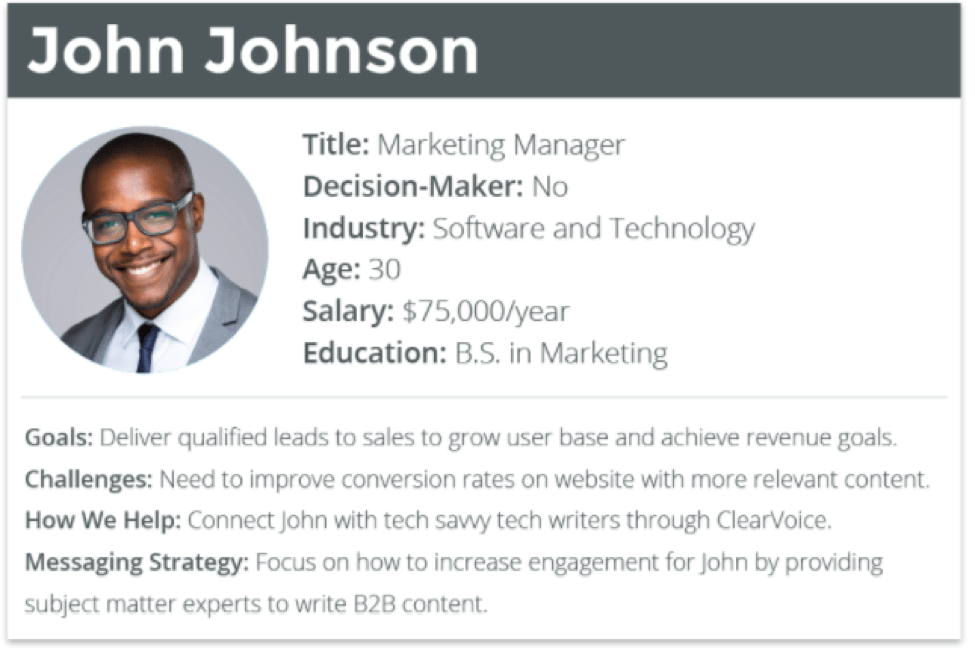
Additionally, when you’re coming up with potential lead sources, you’ll likely consider corporate-related materials and channels.
For instance, LinkedIn might become a more effective social channel for lead generation than Instagram if you’re targeting a B2B audience. Similarly, you’ll probably create lead magnets and other assets related to helping your target client resolve work-related pain points.
9 Effective B2B Lead-Generation Strategies
The three-stop B2B lead-generation process looks pretty similar no matter what channel you use:

For instance, let’s say that you write lots of blog content. That’s great. You’ll attract visitors by ranking in Google, posting on social media, and sharing each piece of content.
If your blog just sits there, however, it’s not doing enough of the heavy lifting. You need an engaging lead-generation strategy.
Include a compelling call to action (CTA) in every blog post you write. It can be the same CTA for every post, or you can adjust it based on your target audience for the content.
You’ve created the content and invited the reader to engage. Now you present an offer.
It could be a lead magnet to get the user’s email address, a discount on your B2B product or service, or anything else your prospect might want.
You’ll do the same thing through other channels. When you generate leads through email, you send your subscribers content. You invite the reader to engage and present an offer. It’s that simple.
But what B2B lead-generation strategies should you be using to attract new leads? Let’s explore some of the most effective options.
1. Attract and Convert B2B Leads Through Content Marketing
Content is at the heart of any successful B2B lead-generation strategy. Irrespective of the channel you choose, email, social media, or your website, content is key to introducing potential customers to your brand or products.
Use content to inform and educate your potential customers about the benefits of your products or services. Create content that sparks their interest and engages them enough to interact more with your business.
When you create content for a B2B audience, you need to pack in as much value as possible. Even if you have to give away a few trade secrets, your audience will reward your generosity by interacting with your content.
Start with the type of content you do best. You have lots of options:
- Articles
- Long-form guides
- Content round-ups
- Infographics / AI Infographics
- Videos
- Audio content
- Webinars
According to the Content Marketing Institute, here are the top content types B2B marketers use.
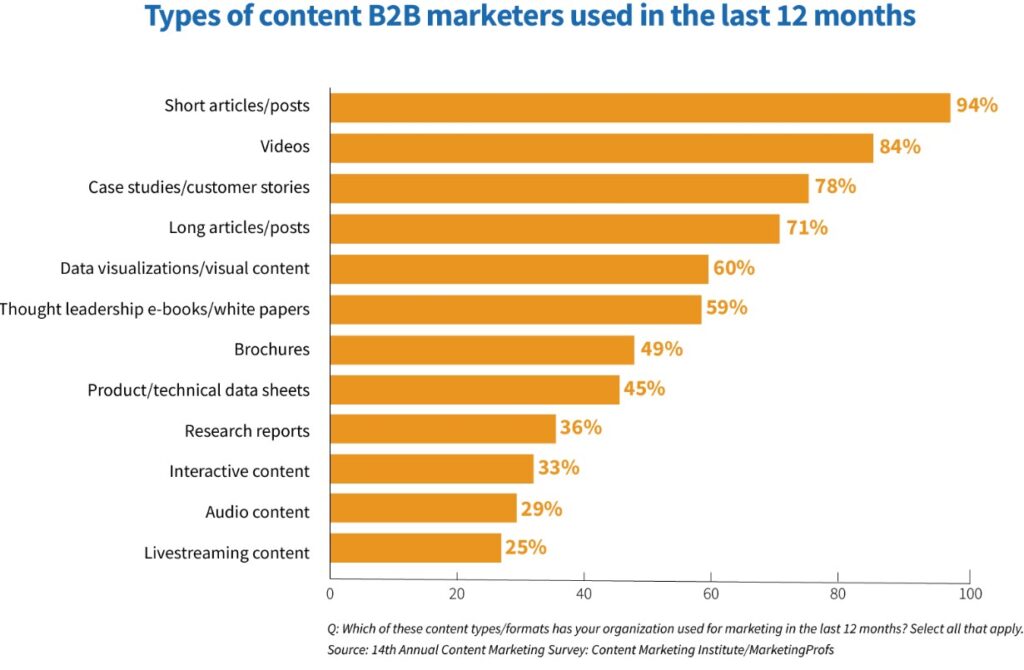
Image via CMI
Use a mix of various content types to cater to different audiences.
For instance, some people would rather read information. Others prefer to watch videos or listen to audio.
The key to B2B lead generation using content is to add calls to action to encourage people to take the next step, irrespective of the type of content you create.
Hello Bar, for example, uses CTAs at the end of blog posts and on the right sidebar to generate high-quality leads from blog traffic. Here’s an example.

Image via Hello Bar
2. Use Search Engine Optimization to Boost Organic Site Traffic
Search engine optimization (SEO) is essential for attracting organic traffic from search engines like Google. Unlike paid channels like PPC or social ads, getting organic traffic is free.
Optimize every piece of content you distribute. Conduct keyword research, write a descriptive headline, organize your article with H-level subheadings, and add alt text for your images.
SEO is only part of it, though. You also have to create content in which your target audience is interested.
As mentioned above, keyword research can help. Visit a site like Ubersuggest and type in keywords related to your industry.
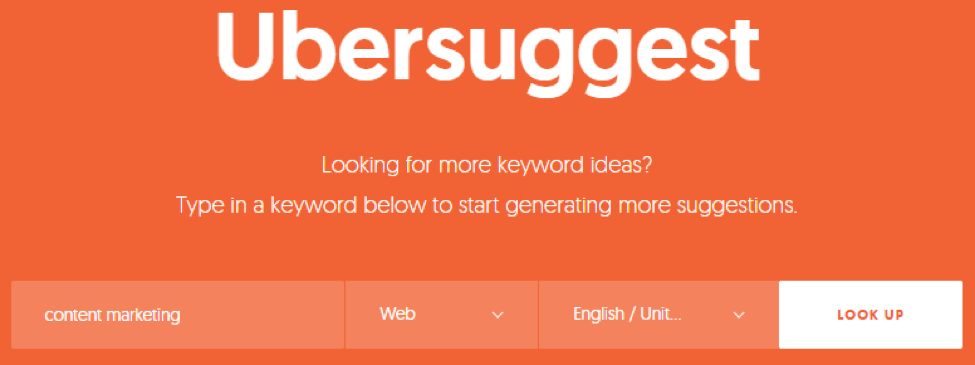
After you hit “LOOK UP,” you’ll get tons of data related to your original keyword as well as related keywords.
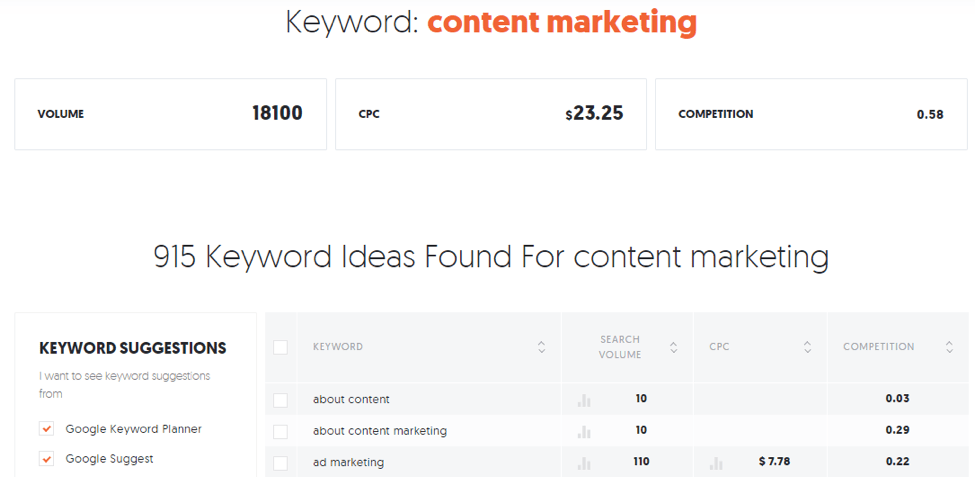
Keywords with high volume suggest high levels of interest. Focus on them to make sure you’re delivering content that will prove valuable to your audience.
3. Create Irresistible Lead Magnets

A lead magnet is a piece of content or a resource you use to incentivize people to provide their personal information. In other words, you’re trading a valuable resource for something you want, like the user’s email address.
The best lead magnets offer value far and beyond what you might post on your blog. Ideally, they’re immediately useful for your target audience.
Some of the most effective lead magnets include the following:
- Ebooks
- In-depth case studies
- Tools and calculators
- Free demos for your app
- Free trials for your software
- Report or whitepaper
Whatever you choose, make sure you can pinpoint its value during the lead-generation process.
Also, create a separate landing page for each lead magnet and use a short lead capture form to get the best results.
Search Engine Journal, for example, has a collection of ebooks that it uses as lead magnets. Anyone who wants to download one must provide their email information to access it.
This is what the lead-generation form looks like.
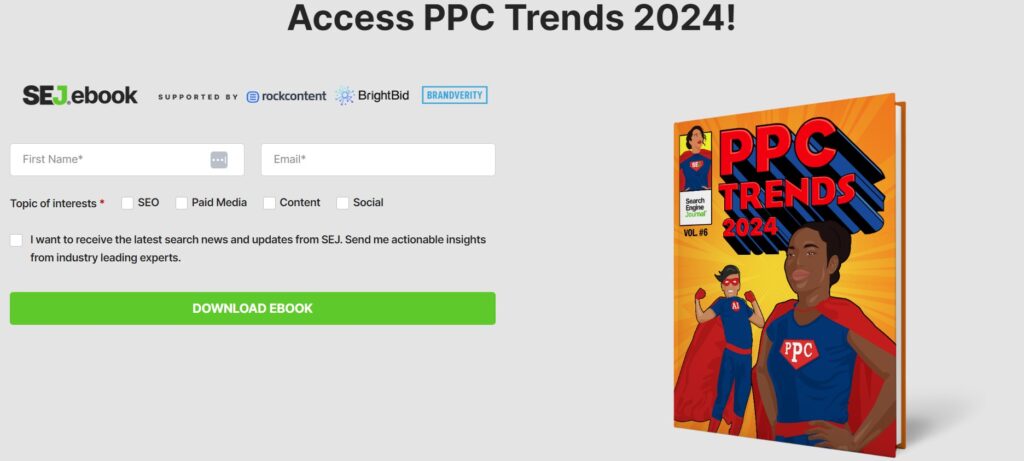
Image via SEJ
Not just that, it details the benefits of each ebook on the dedicated landing page for it. This helps convince prospects to provide their information to get the ebook, further easing the B2B lead-generation process.
4. Use LinkedIn for B2B Lead Generation
LinkedIn is by far the most effective B2B lead-generation social media platform.
It’s a social network for professionals in various industries, where you can find key decision-makers from companies that can be your clients.
Here are some tips for your sales team to use LinkedIn for B2B lead generation:
- Build organic reach by posting valuable content for your target audience and adding links to your website to generate leads.
- Join niche-specific groups to reach a specific target audience, build industry connections, and establish your expertise. Engage in conversations and answer questions to showcase your expertise and generate leads for your business.
- Use LinkedIn advertising to show sponsored content and InMail to people who match your ideal customer profile.
- Use an account-based marketing (ABM) approach to identify and reach high-value prospects on LinkedIn.
The best part is that ads on LinkedIn look just like native content, except for a small “promoted” tag, as shown in the example below.
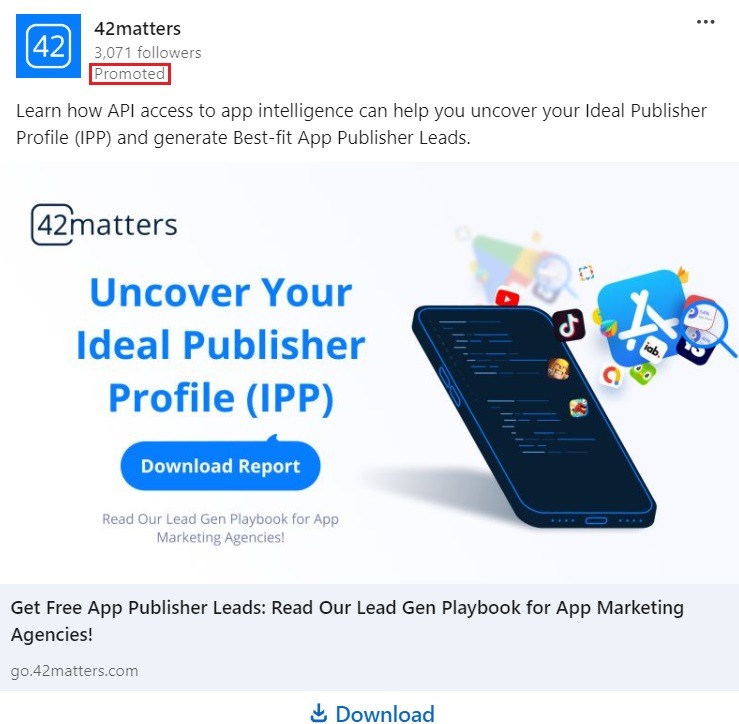
Image via LinkedIn
Since these posts look like native content, they are highly effective in engaging your target audience. Just add a compelling CTA, with a link to a landing page, and you have the perfect mix required for B2B lead generation via LinkedIn.
5. Leverage Other Social Media Channels
Believe it or not, the tools you already use to establish and promote your brand can become B2B lead-generating machines. Social media is great for not only spreading brand awareness, but also converting followers into leads.
As mentioned above, LinkedIn often provides the best source of leads for B2B marketers.
However, don’t discount other social platforms, including the following:
- Facebook: Link to blog articles, post images, host giveaways, and invite people to subscribe to your newsletter.
- YouTube: Include relevant cards directing viewers back to your website. You can also include a link or two in the descriptions of your videos with appropriate CTAs.
- Instagram: Use the “Link in profile” code to direct users to the one link you’re able to provide. Giveaways and contests work particularly well for lead gen.
- Twitter: Link to articles and videos, share your clients’ success stories, and get involved in conversations.
- Pinterest: Create your own boards related to your B2B niche.
All of these channels can help with your B2B lead-generation efforts.
Here are some tips for your sales and marketing teams to use social media for B2B lead generation:
- Include a CTA button on your social media profiles, where possible.
- Make sure your social media bios have your website link.
- Add a clear CTA to your social media content to turn your audience into leads.
- Leverage social media advertising to reach a specific audience and drive them to your website using CTA buttons.
Check out Hello Bar’s Facebook profile, for example. There’s a “Learn More” CTA button and a link to the homepage of its website to direct traffic from Facebook to its website.
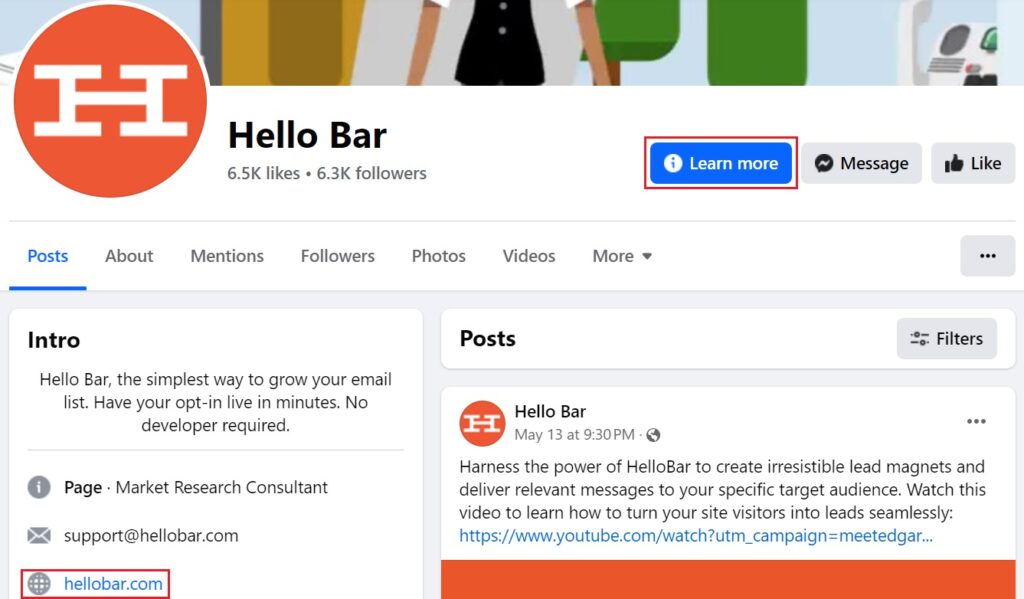
Image via Facebook
6. Audit Your Website for Conversion Rate Optimization
Conversion rate optimization (CRO) helps increase the chances of your leads converting on your offers. In other words, you’ll gain more prospects from your B2B lead-generation strategies.
We’ve already talked about optimizing your individual pieces of content, but what about the rest of your website? You likely have static pages, landing pages, and other areas of your website where prospects might convert.
Conducting a complete audit of your site can help you identify areas where you could apply CRO strategies. We’ve come up with a simple guide to help you complete the audit and generate more leads for your B2B business.
Consider Mobile Optimization
A website that hasn’t been optimized for mobile will struggle to rank in the search engines. Additionally, people who access your site via mobile devices might leave because of a poor user experience (UX).
For instance, websites that aren’t mobile-optimized often load very slowly on smartphones and tablets. That’s never good news, especially since most mobile visitors would leave a website if it doesn’t load in 5 seconds. Many will not even wait 3 seconds.
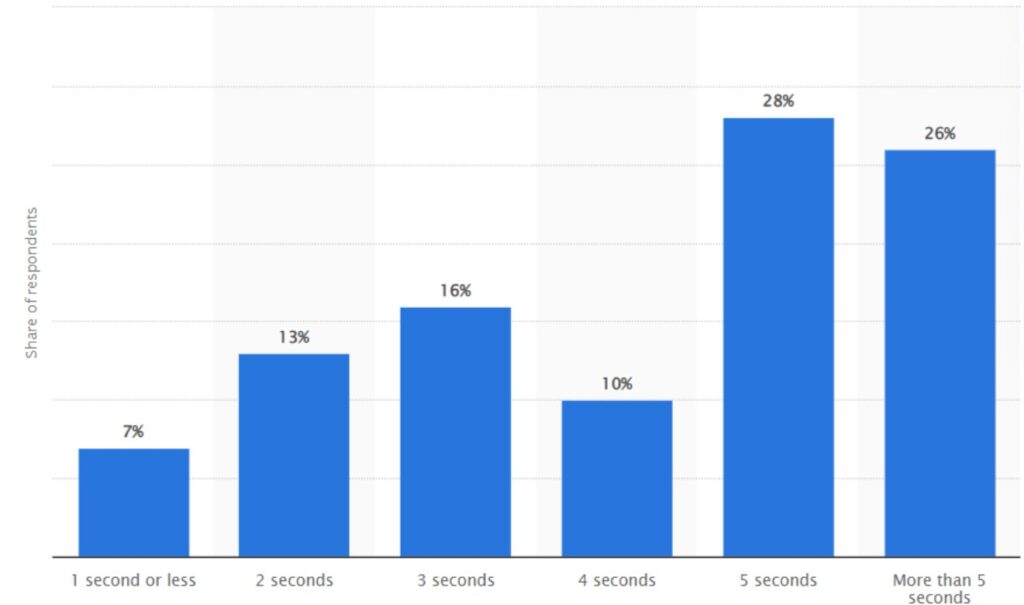
Image via Statista
Non-mobile-optimized sites often render poorly on mobile devices. Images might appear stretched, distorted, or too big for the screen, and the text might prove too large or too small for easy reading.
You can create two websites — one for mobile and one for desktop — but it’s easier to develop a responsive website. That way, it will adjust automatically to the screen the viewer uses.
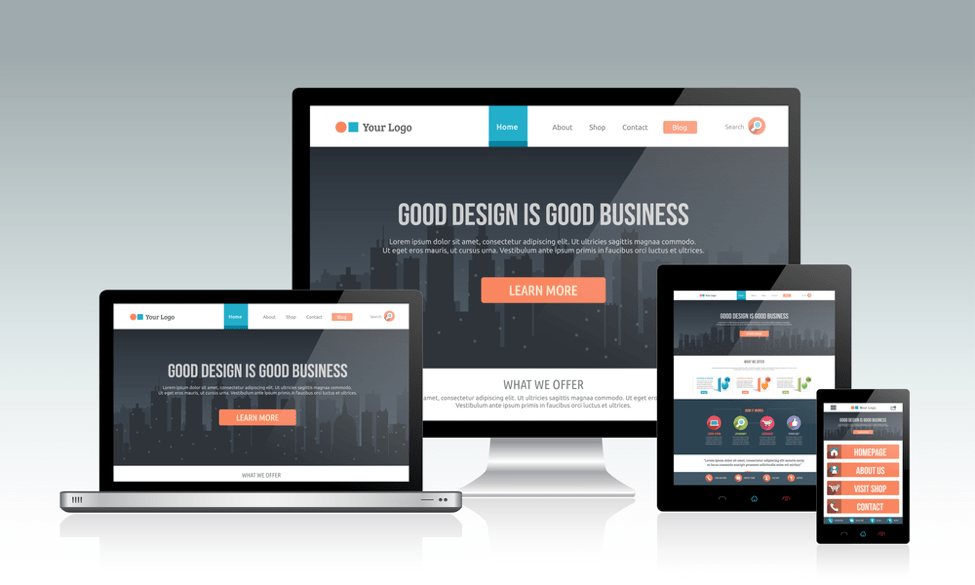
It’s far easier to manage one site than two, so opt for a responsive design instead of creating a separate mobile website.
Add Relevant CTAs
The CTA is the backbone of any B2B lead-generation campaign. It tells your visitors what you want them to do next.
It’s kind of like parenting. If you want your child to clean up toys, you don’t expect them to read your mind. Instead, you say, “Susie, please pick up your toys.”
In B2B marketing, you say, “Susie, please download my free ebook and join my mailing list.”
Of course, you don’t want to put it exactly like that.
A great CTA incorporates several features, such as:
- Visibility: Make your CTA stand out on a page. Use contrasting colors for your CTA buttons, larger font, and engaging visual elements.
- Specifics: Don’t use generic CTAs like “Click here”. Tell people exactly what next steps you want them to take.
- Imagery: Try to lead your viewer’s eye to the CTA using visuals. You can use images of people looking at it, for instance, or arrows pointing to the button.
Of course, you can’t use all these features in every CTA. On social, you have limited ways to design your own CTA. However, on your site, you get the freedom of total creative control.
Check out the example below, where the “Sign up Now” CTA button stands out on the page, due to its bright orange color, which contrasts with the rest of the page. CTAs that stand out are great for lead generation as they bring the reader’s focus to the most important element on a page.
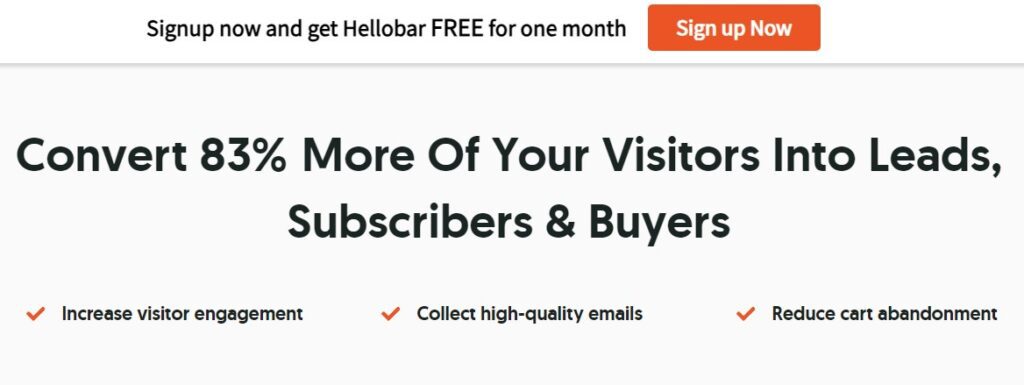
Image via Hello Bar
A/B test different CTAs to make sure you’re using the perfect copy, offer, and CTA. Hello Bar not only lets you A/B test your CRO efforts, but also automatically tells you which version performed better.
After you create a campaign, you’ll get the option to A/B test versions of your offer and CTA. Hello Bar takes care of the rest.
Check out this video to understand how A/B testing works with Hello Bar.
There’s no need to comb through ridiculous amounts of data.
Use Exit-Intent Popups
Of all the different CTA types, exit-intent popups often work best. They’re designed to bring back visitors who want to click away.
Many site visitors leave a website after visiting a single page without exploring further. These represent lost opportunities for lead generation.
That means you have to try extra hard to keep visitors around.
An exit-intent popup appears when a user attempts to close the browser or browser tab. You’ve probably experienced hundreds of them by now.
Your mouse cursor drifts toward that familiar X, but a popup appears on the screen. It offers you a discount on an upcoming purchase, a free download, or some other incentive to stick around.
Why do exit-intent popups work? Because they capture the user’s attention. It’s hard to miss a sudden change in the screen content.
They work particularly well on blogs because blog posts often include the CTA at the end. If you’ve written a 4,000-word article, you can guarantee that much of your traffic won’t read to the end.
The popup ensures that everyone sees your CTA.
You can add an exit-intent popup with Hello Bar. It’s fast and easy to set up, and you won’t have to worry about missing out on leads.
You can set the controls and decide how long after a visitor enters your site the popup will appear.
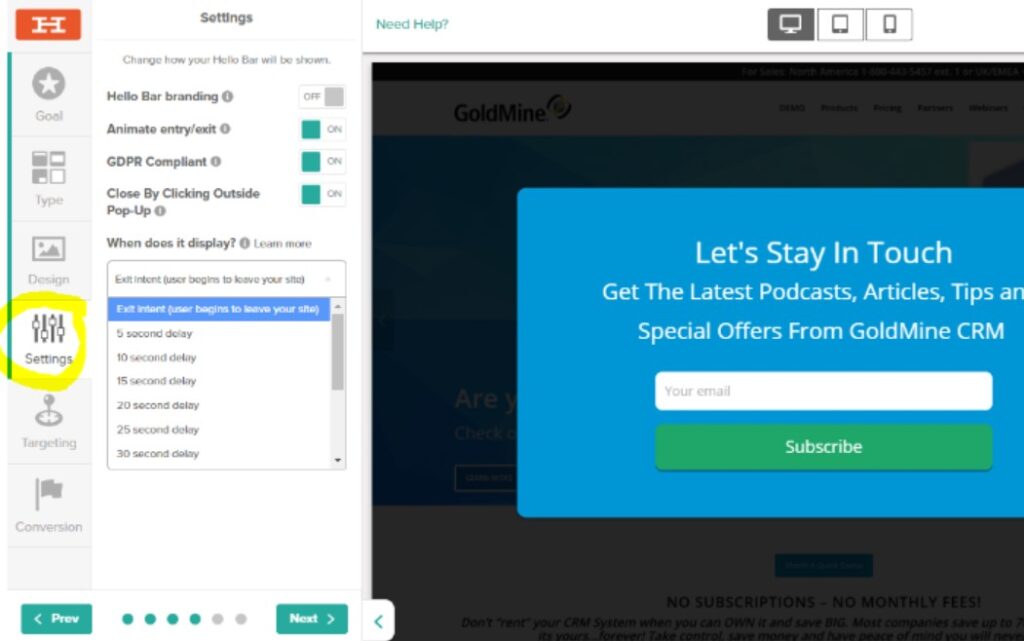
Image via Hello Bar
Incentivize Opt-In Newsletter Signups
We’ve already talked about lead magnets, but they warrant another mention. Lead magnets turn an offer into an incentivized offer.
Imagine that you’re visiting a website for the very first time. There’s a signup form in the site’s sidebar that requests your email address. That’s it.
Then you scroll down the page and see a CTA. The website still wants your email address, but now they’re offering a free case study that will help you solve a problem you’re already experiencing.
You might have ignored the first request, but now you want that case study. That’s exactly how incentivizing opt-ins can work for your site.
One easy way to incentivize people into signing up for your newsletter is to mention what they’ll get from it. Is it access to the latest content, exclusive offers, or something else?
Clearly list the benefits of signing up to get more subscribers. Check out the example of a newsletter signup form below where the company clearly lists the benefits. The 10% discount on the next purchase further sweetens the deal and encourages hesitant site visitors to subscribe to the company’s newsletter.

Image via Laughing Hens
Use Chatbots to Engage with Website Visitors
A chatbot is extremely useful for B2B marketers — especially those who can’t serve customers 24/7.
Let’s face it: That’s all of us, right?
Chatbots mimic human communication and help drive users toward a specific goal. For instance, if you want people to sign up for a free trial, your chatbot can point out its benefits and help your prospect sign up.
You can train chatbots to help site visitors find relevant pages and resources on your website. This will help you drive site visitors to strategic landing pages from where you can capture leads.
The cost to build a chatbot is a one-time investment but will help to improve user engagement.
7. Use Guest Blogging to Generate Leads
Guest posting on authoritative websites within your niche is a great way to establish your expertise to a wider audience.
Top websites within your niche will have a high volume of monthly visitors, many of whom could be your prospective customers. By sharing high-quality, useful content, you can draw their attention and build your authority.
Strategically add links to relevant resources and landing pages within your content to drive traffic to your website and generate leads.
8. Launch a Referral Program
One of the most effective B2B lead-generation strategies is asking your existing clients to recommend your business to others. After all, no one can convince a prospect of your value better than a satisfied client who’s benefiting from your products or services.
A referral program that rewards such recommendations incentivizes your clients to do so. Make sure you reward both the existing clients and the leads they bring in, for your program to deliver the best results.
Also, ensure the incentive is good enough to motivate your clients to make a referral.
The email management software provider Hiver has a lucrative referral program where it rewards customers as much as $350 for every qualified referral.
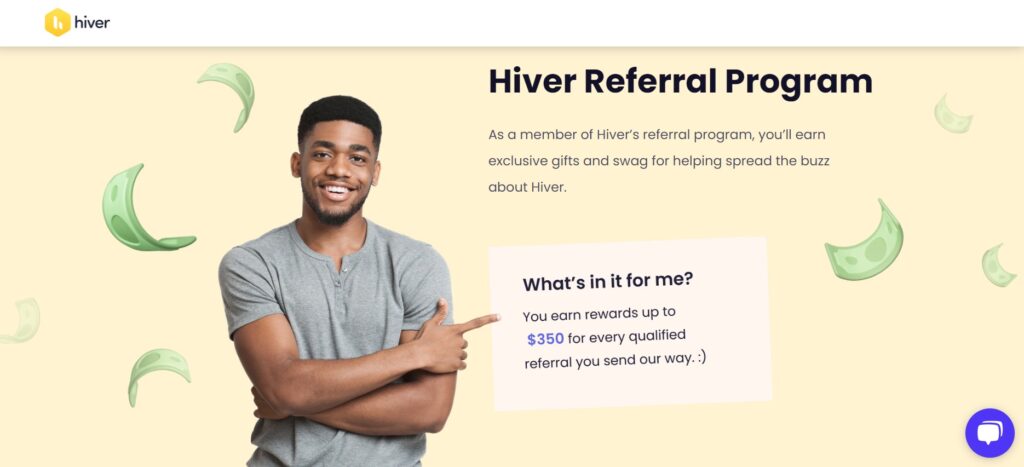
Image via Hiver
The incentive is good enough to spur its clients into action and refer the brand to their friends, creating a stream of qualified leads for the business.
9. Invest in B2B Lead-Generation Software
We’ve talked a lot about manual B2B lead-generation options (chatbots aside), but what if you could automate much of the above and generate leads while you sleep?
Hello Bar offers a quick and easy way to generate B2B leads from whatever channel you’re using. Maximize your email subscribers, boost social media engagement, and encourage people to follow you.
With Hello Bar, you can also A/B test your CTAs and other elements to figure out what combination works best.
It’s easy to get started with Hello Bar. Once you set up the code on your website, you’ll be ready to capture more B2B leads within minutes.
Use the Right Mix to B2B Lead-Generation Strategies
It’s true that you can’t automate everything. That’s impossible — and ineffective.
You still want to communicate with your audience, distribute content, and grow your brand awareness. That means posting on social media, blogging, conducting outreach, and answering customers’ or clients’ questions.
The important thing is to find balance. Automate what you can so you’re able to devote as much time as possible to the things you can’t automate.
Take a look at recent data from social, your website, your blog, and other channels. Identify three to four B2B lead-generation channels that have the highest engagement.
Once you’ve done that, create a lead-generation strategy for each channel. You might specify the types of blog posts you want to write for each of your buyer personas, for example. Then figure out how you’ll generate leads from those activities.
Optimize your entire website with CTAs. You can do that with Hello Bar so you don’t have to manually change every page.
Finally, track your progress. Conduct lots of A/B tests to optimize B2B lead generation and get maximum qualified leads.
FAQ
Q1. What is a B2B lead-generation strategy?
A B2B lead-generation strategy is a company’s plan for generating leads for the business. It involves a series of steps it plans to take to generate qualified leads who have a high likelihood of turning into clients.
B2B lead-generation strategies, on the other hand, refer to tactics that businesses use to generate leads.
Q2. What are the most effective lead generation strategies for B2B marketers?
Here are our top picks of the most effective B2B lead-generation strategies:
- Attract and convert B2B leads through content marketing
- Use SEO to boost organic site traffic
- Create irresistible lead magnets
- Use LinkedIn for B2B lead generation
- Leverage other social media channels
- Audit your website for conversion rate optimization
- Use guest blogging to generate leads
- Launch a referral program
- Invest in B2B lead-generation software
Q3. What platforms are used to generate B2B leads?
Two of the most popular platforms for B2B lead-generation campaigns include:
- Business websites and blogs: Use strategically placed lead-capture forms and CTAs to generate leads from your website. This is the primary lead-generation channel for most B2B businesses and should be your top priority.
- LinkedIn: Building an organic reach and advertising are two effective strategies for B2B lead generation.
Though LinkedIn is the most useful for B2B lead generation, other social media platforms can also play a role.
Q4. Why is B2B lead generation important?
Unlike B2C customers, who often buy impulsively, B2B buyers take time to make important purchases for their business. So, the time from a prospect first learning about a brand to becoming a client is a lot.
This makes B2B lead generation important as it helps inform new prospective customers about a brand and nudges them into the company’s sales funnel.
It’s the first step in the marketing and sales process, without which B2B businesses would not have enough leads they can nurture into becoming customers.
Q6. Should you pay for lead generation?
Though there are numerous free B2B lead-generation strategies, sometimes you need to pay to get quick results. The choice is yours and if you don’t want to pay for it, there are still many tactics you can use.
Some common free B2B lead-generation strategies include:
- Using content to build organic reach and engagement.
- Adding CTAs and forms on your website to capture leads from various pages.
- Posting targeted social media content to attract the right audience and direct them to your website using CTAs and links.
- Creating lead magnets, such as gated content or free tools, to capture leads.
Also, use free or paid lead-generation tools to further boost your B2B lead-generation efforts and generate more qualified leads.
Conclusion
Creating effective B2B lead-generation strategies doesn’t have to be difficult or time-consuming. If you have the necessary resources at your disposal, you can automate much of the process.
The best B2B lead-generation tactics result in not only more leads, but also qualified leads. You want to attract potential clients who can and want to pay for your product or service.
While it’s similar to the B2C process, B2B lead generation focuses on potential clients’ professional accomplishments, goals, pain points, and needs. You can hit all of those with six simple strategies.
Start with content marketing and SEO. Create high-value content, then optimize it for search engines.
To incentivize prospects, offer lead magnets with your compelling CTAs. Tell your website visitors exactly what you want them to do, then offer them a reason to carry through on that action.
Make sure your entire website is optimized for conversions. You can use an automated tool like Hello Bar to take over the heavy lifting.
If you’re optimizing your site for lead generation and CRO, you’ll see an increase in both leads and revenue.
What is your favorite B2B lead-generation strategy?



